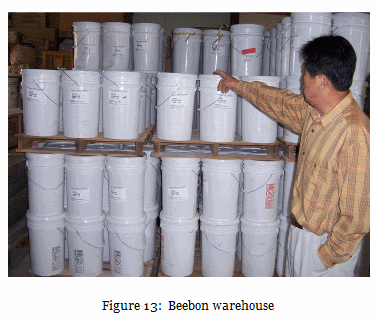
Manufacturing
The manufacture of MgO involves fusion of magnesium containing raw material, followed by calcination, grinding, sizing, blending and quality control (QC) testing.
Fused Electrical Grade Magnesium Oxide
Over the years a number of suppliers have entered and exited the fused electrical grade MgO segment because of its small market size, technical performance, and difficult manufacturing know how. UCM – Group remains the world leader and innovator in this business.
Fused electrical grade MgO can be divided into impure low temperature grades and high purity high temperature grades. UCM is the primary world supplier of high purity high temperature MgO, and supports the market with manufacturing and technical support.
Many other MgO producers are focused in the lower quality grades.
The emergence of supplies of competitively priced but lower quality fused magnesia has increased competition in the industry. While lower prices generally support growth of the refractory and low value electrical markets, it highlights the need and importance of using quality material such as UCM grades 22SR, 33, 3LA and 5A in applications that care about product quality and performance in the final consumer products.
Description of Fused Electrical Grade MgO Manufacture(2)
Following is a general description of the typical MgO manufacturing process from the technical literature for calcined, deadburned and fused magnesia from published literature.1,2,10,11
Calcining magnesite (MgCO3) at intermediate temperatures up to 1000oC eliminates the majority (roughly 95%) of the contained carbon oxide. The product is used in certain agricultural and industrial applications as well as low temperature electrical insulations, industrial fillers, and flue gas sulfur treatment.
Further heating at higher temperatures up to 1700-2100oC produces what is called ¡°deadburned¡± magnesia which is used in refractory applications. Heating the MgO to this temperature drives off most of the remaining carbon oxide a hard crystalline non reactive form of MgO called periclase which has high temperature resistance and dimensional stability. The refractory materials are used in the form of bricks and molded shapes in steel making as high temperature lining for equipment.
Fused electrical grade magnesia is produced in an arc furnace in which the MgO is further heated to around 2700oC which allows the growth of very large periclase crystals (>1000 microns compared with 50-100 microns for dead burned magnesia) with a density approaching the theoretical maximum of 3.58g/cm3.
The major determinants of cost are electrical energy and batch cycle times. Different grades involve different processing steps which contribute to the manufacturing cost of the products.

Quality testing, following ASTM test procedures, includes particle size distribution, tap density, flow rate, static flow, sinter index, magnetic iron and electrical resistance.
Beebon stores MgO in two warehouses in Korea.











